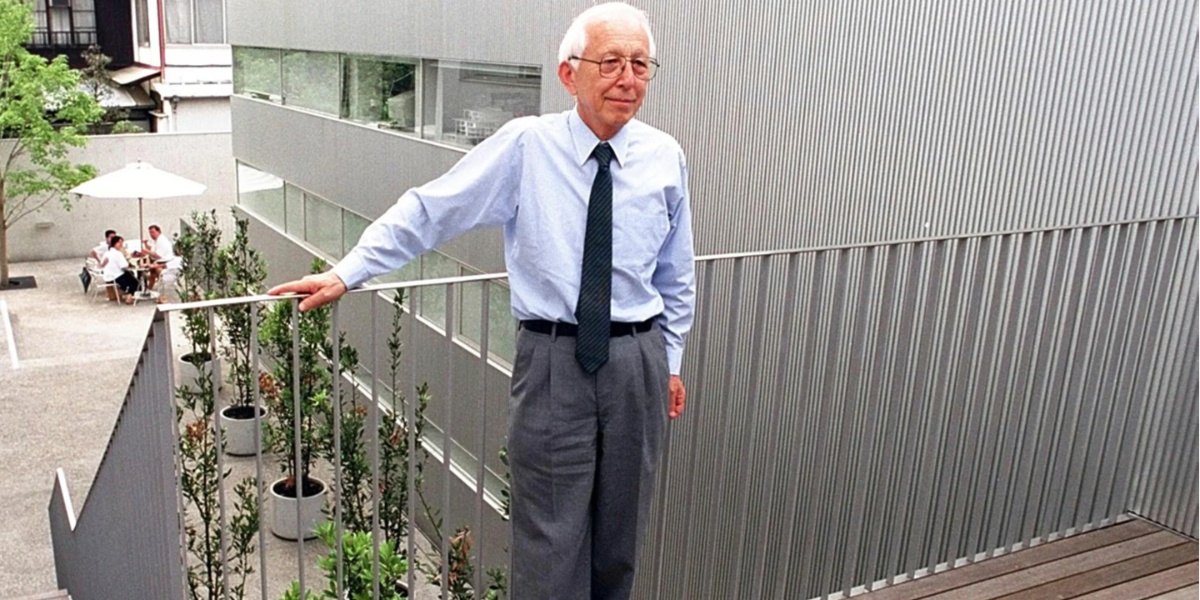The renowned Pritzker Prize-winning Japanese architect Fumihiko Maki passed away. His works were hailed for deftly and artistically blending East and West. He was ninety-five.
Maki & Associates, his firm, said on Wednesday that the Harvard architectural and urban design professor passed away on June 6. According to claims in the Japanese media, old age was the cause of death. The office refused to provide the reports’ veracity.
One of his iconic projects, the National Museum of Modern Art in Kyoto, features floating shapes made of concrete, metal, and glass. At first sight, its grey appearance seems unassuming, but the polished and rough marble highlights reflected light patterns.
Among Maki’s US projects were New York’s 4 World Trade Centre and San Francisco’s Yerba Buena Centre for the Arts. In addition, he completed the Tokyo Hillside Terrace Complex and the Makuhari Messe Exposition Hall in Chiba, Japan.
The administration of Tokyo’s Spiral skyscraper, which Maki created in the 1980s, expressed their condolences for his passing and complimented him for “the beautiful slopes and the rich space that envisioned an urban park.”
Maki voiced complaints in 2013 over the 2020 Tokyo Olympics stadium’s then-planned spaceship-like architecture, calling it outlandish and out of scale with the surrounding area. He said that he had the backing of one hundred individuals, including architects, who were against the scale of the British-Iraqi architect Zaha Hadid’s planned design.
“The problems I see with the planned stadium all relate to the issue of scale,” he said.
That design was eventually ditched for a more modest-looking design by Kengo Kuma which used pieces of wood for a natural Japanese look.
Brief Biography
Maki, who was born in 1928 in Tokyo, attended the Harvard University Graduate School of Design, the University of Tokyo, and the Cranbrook Academy of Art in Michigan for his education. He worked for a number of offices before founding his own design firm in Tokyo in 1965. These offices included the campus planning office of Washington University in St. Louis, Sert, Jackson & Associates in Cambridge, and Skidmore Owings and Merrill, or SOM, which was based in Chicago.
A passionate teacher, Maki gave lectures all around the world in addition to teaching at Harvard, Washington University, and the University of Tokyo. In 2008, MIT Press published a compilation of his articles titled “Nurturing Dreams.” He examined the concept of “oku,” which is a high-density environment in Japan that is “organised into multiple layers like an onion,” according to Maki.
This idea suggests that the Japanese were able to convey a sense of depth even in a small space by using oku.
Awards and Recognitions
After his master Kenzo Tange, Maki became the second Japanese person to win the Pritzker, often regarded as the Nobel Prize of architecture. Japanese modernism was founded by Maki, Arata Isozaki, and Kisho Kurokawa, three other Tange students.
When Maki was chosen by the Pritzker, he was hailed as one of the new generation of architects remaking postwar Japan.
Other honours were bestowed to Maki, including the American Academy of Arts and Letters’ 1999 Arnold Brunner Prize and Israel’s Wolf Prize in 1988. Maki received the AIA Gold Medal, the organization’s highest honour, in 2011 from the American Institute of Architects.
There will be a memorial service, according to sources in Japanese media.











